What To Eat
Moroccan food is a mixture of Mediterranean, Andalusian, Arabic, and North African cuisines. For breakfast, a platter including bread with fruit jam, a hard boiled or fried egg, olives, and cheese is common. Some of my favorite breakfast items were meloui (similar to a pancake), msemen (a flat dough similar to a crepe), and beghrir (a spongy pancake similar to a crumpet, which was my favorite of the three).
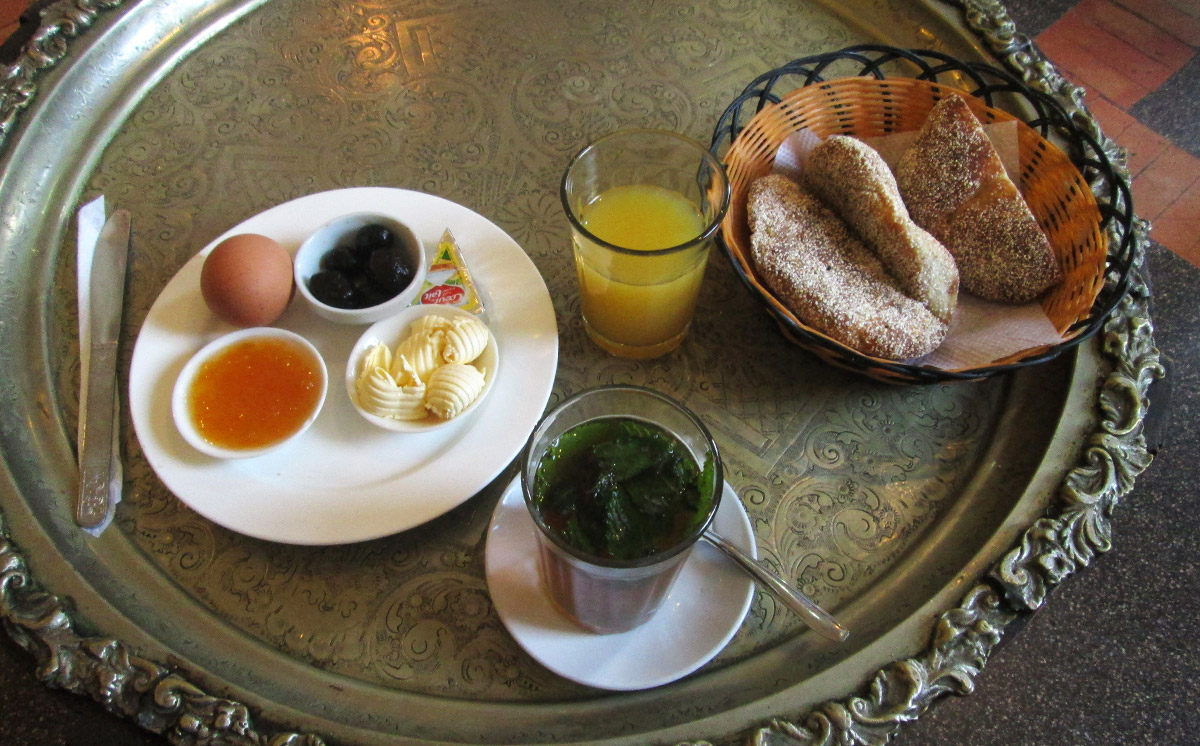
01 | A Moroccan breakfast with bread and jam, olives, mint tea, fresh orange juice, and an egg
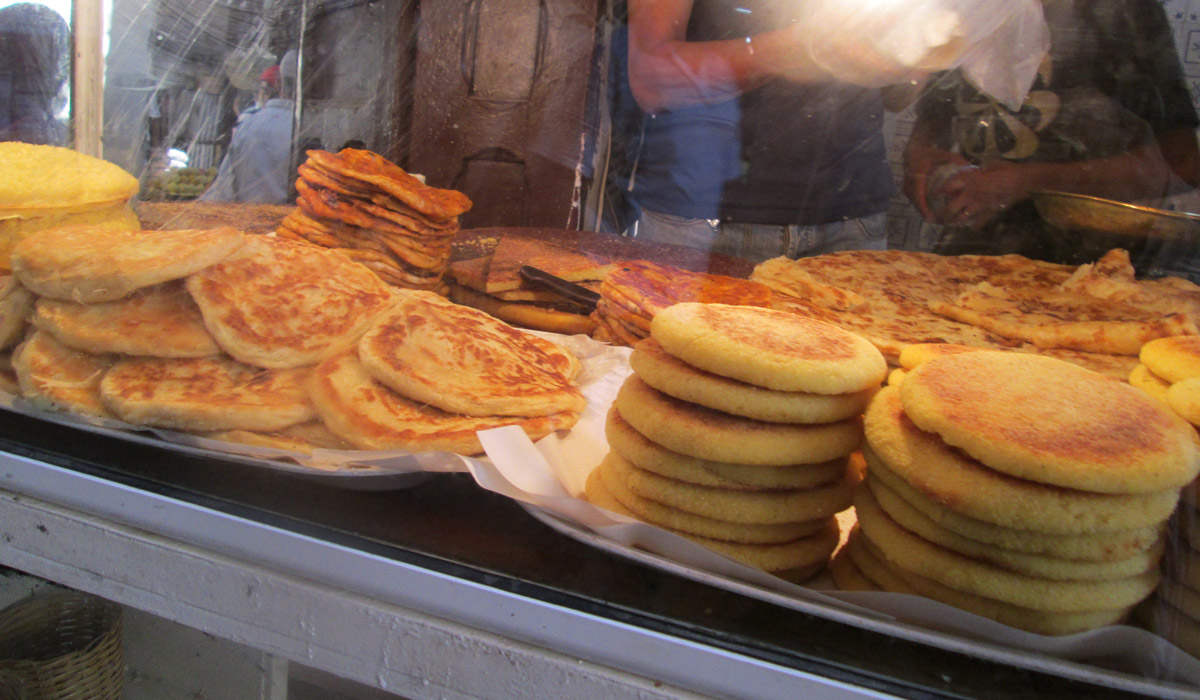
02 | Moroccan breakfast foods including msemen, beghrir, and meloui
The national dish of Morocco is couscous. While in the West the word “couscous” is often used to refer to the balls made out of semolina that are similar to rice, “couscous” in Morocco refers to the entire dish, which consists of a plate of couscous cooked in a mild broth which is then covered in vegetables (and sometimes meat). The next most popular Moroccan dish is tajine, which is named for the pot in which it’s prepared. The tajine pot features a round plate where food is placed, and is topped with a cone shaped lid designed to catch the steam and drip it back down into the food. Tajines commonly feature lamb, chicken, or beef with vegetables. While some restaurants in the West will serve tajines with couscous for you to put the tajine on top of (the same way you’d put General Tso’s Chicken on top of rice), in Morocco the tajine is meant to be eaten alone as more of a stew type dish (albeit with very little broth). Another popular Moroccan dish is the pastilla, a pastry filled with chicken that features both sweet and salty flavors, which is especially popular in the city of Fes.
Some of my favorite things to eat in Morocco were the lamb dishes. I’ve always been a huge fan of lamb, but it can be difficult to find in the US. I’ve heard other Americans complain that lamb can taste gamey or pungent, but the lamb in Morocco is of a different breed which doesn’t have the same gamey flavor that many Americans can find unappealing. One of my favorite lamb dishes was tanjia, which is found almost exclusively in Marrakesh. The lamb is cooked for hours until it’s tender and juicy. It’s then served on a plate with bread so you can eat it as a sandwich, along with a mix of salt and cumin on the table to season it with. Another, very similar dish, is mechoui. Mechoui is sold by weight, but is served about the same way as tanjia, and has a similar flavor.
Last, but not least, you can’t talk about food in Morocco without mentioning mint tea. There’s nowhere you can go in the country where you won’t find hot mint tea waiting for you. Even on the hottest of hot days, you’ll see Moroccans with a cup in hand. It’s made of green tea mixed with peppermint leaves and loaded with sugar. If you’re not a fan of tea, Morocco also has plenty of places with fresh squeezed juice–orange being the most popular. A word of warning though: many outdoor juice stands don’t properly clean their glasses between customers, so proceed with caution or perhaps supply your own cup. Tap water isn’t safe in Morocco, so you’ll want to buy your own, which is cheap. That being said, bottled water in Morocco–while perfectly safe to drink–can have a strong sulfur flavor, so I found myself sticking mostly to mint tea and soda.
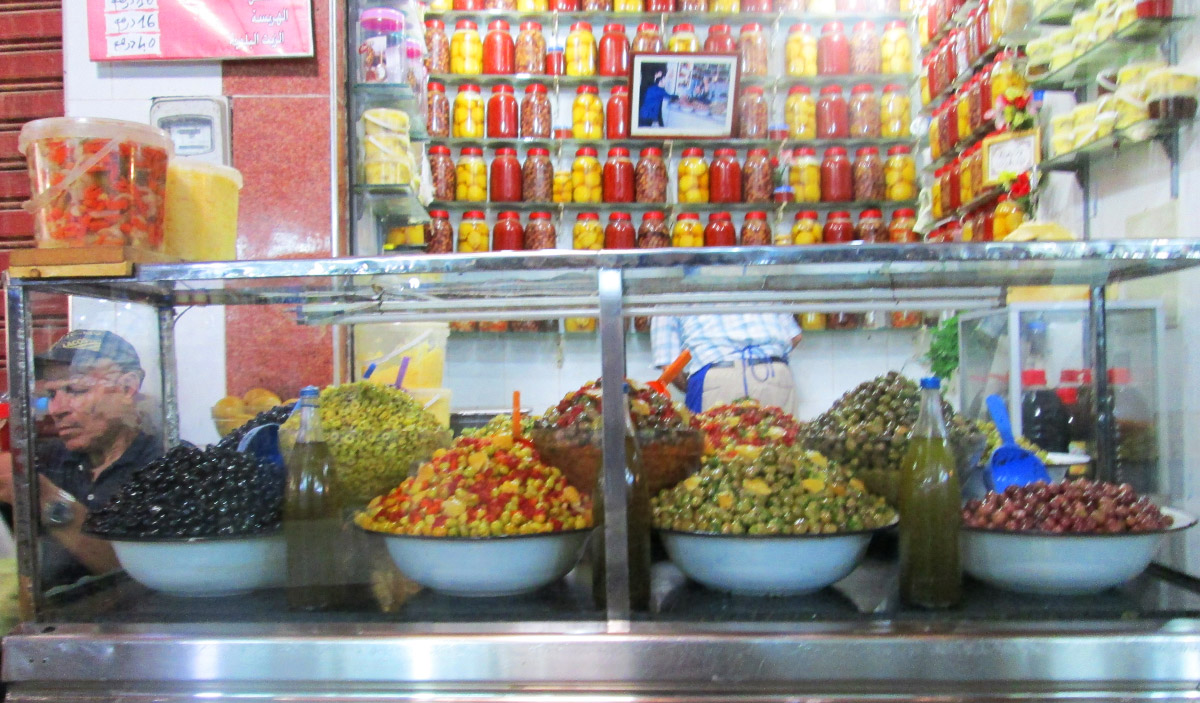
03 | Olives for sale in Fes, Morocco
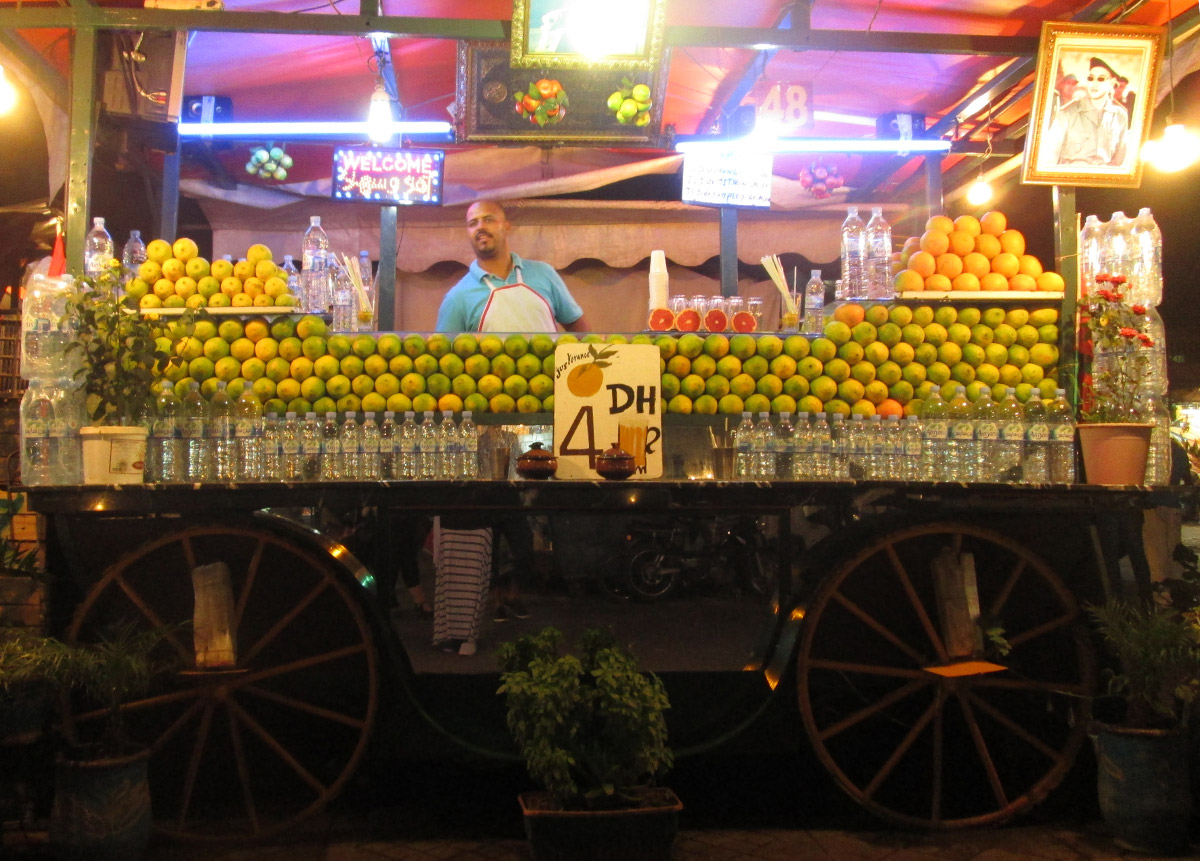
04 | An orange juice stand in Jemaa El Fna square in Marrakesh, Morocco
To read more about Moroccan food, check out Wikipedia’s excellent article on Moroccan cuisine.
What To Buy + How To Buy It
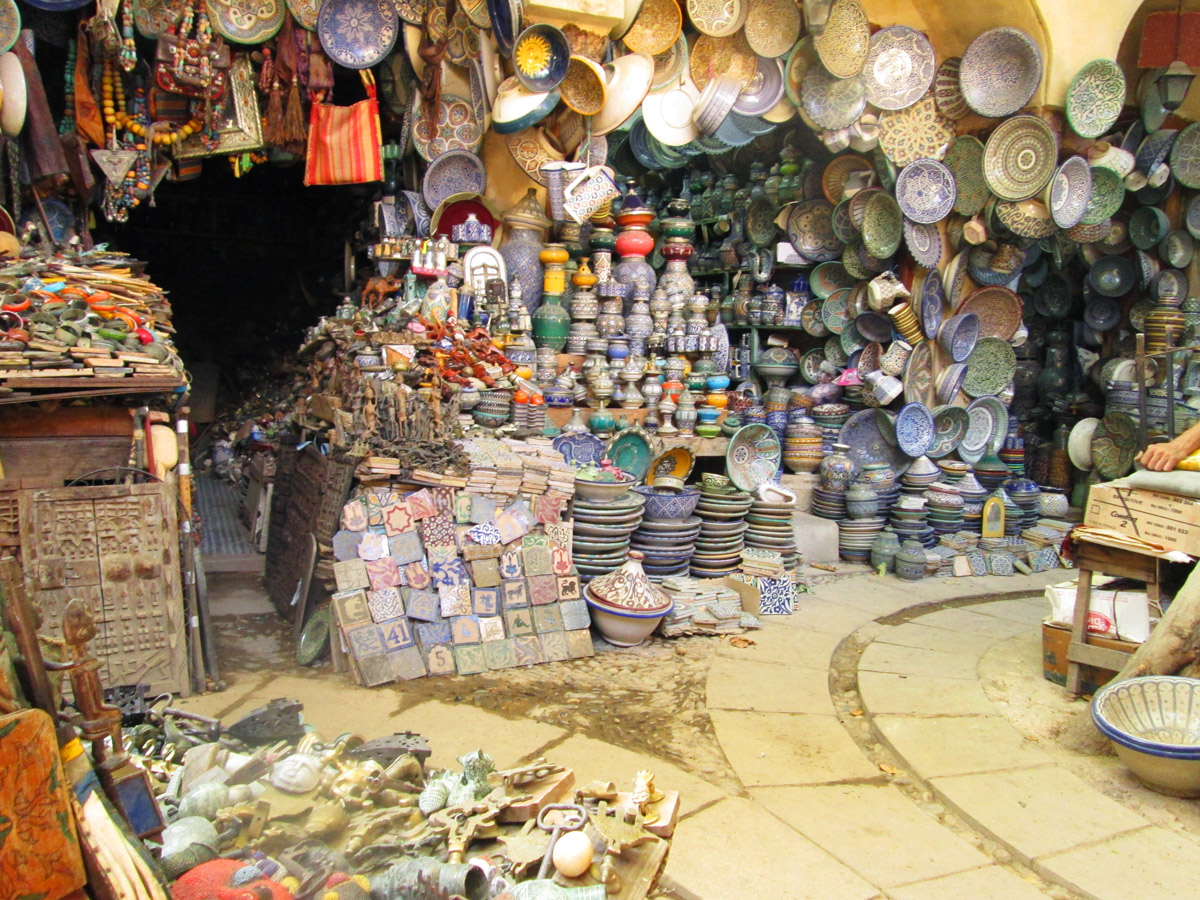
05 | Souks in Fes, Morocco
Shopping in Morocco’s souks (bazaars) is one of the most exciting experiences in Morocco. There’s no shortage of things to take home, including rugs, teapots and tea sets, ceramic pottery, tagines, scarves, Berber bracelets, hamsa decorations, spices, leather bags and wallets, poufs, djellabas, and lanterns. For more information on what to buy and where to go to get it, check out MarocMama’s article on what to buy on your trip.
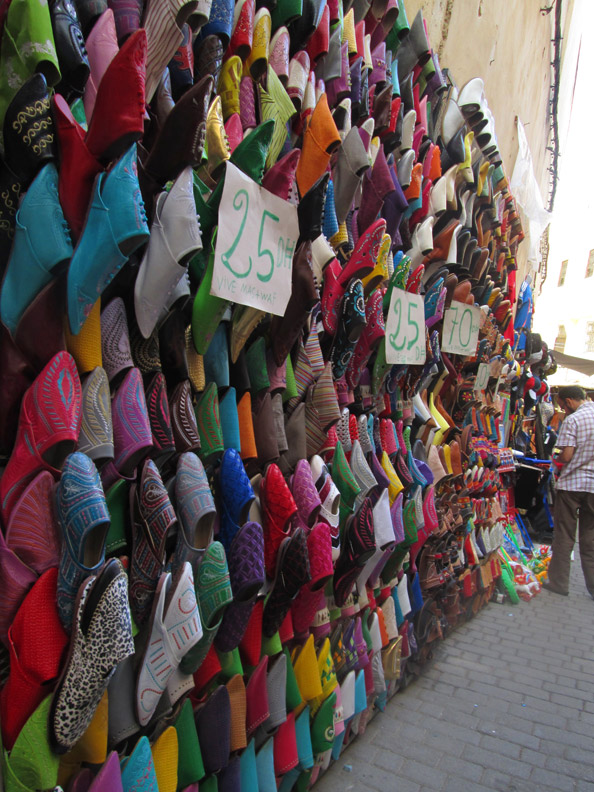
06 | Babouches for sale in Fes, Morocco
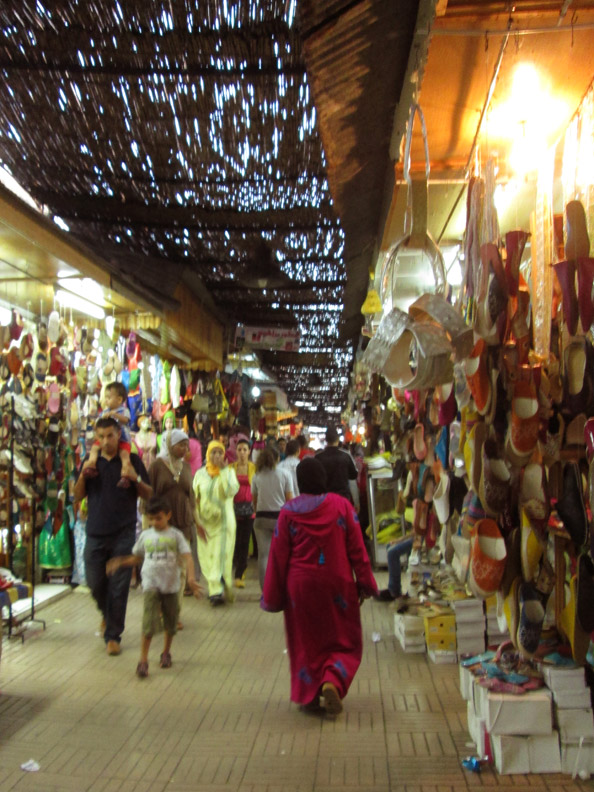
07 | A covered souk in Rabat, Morocco
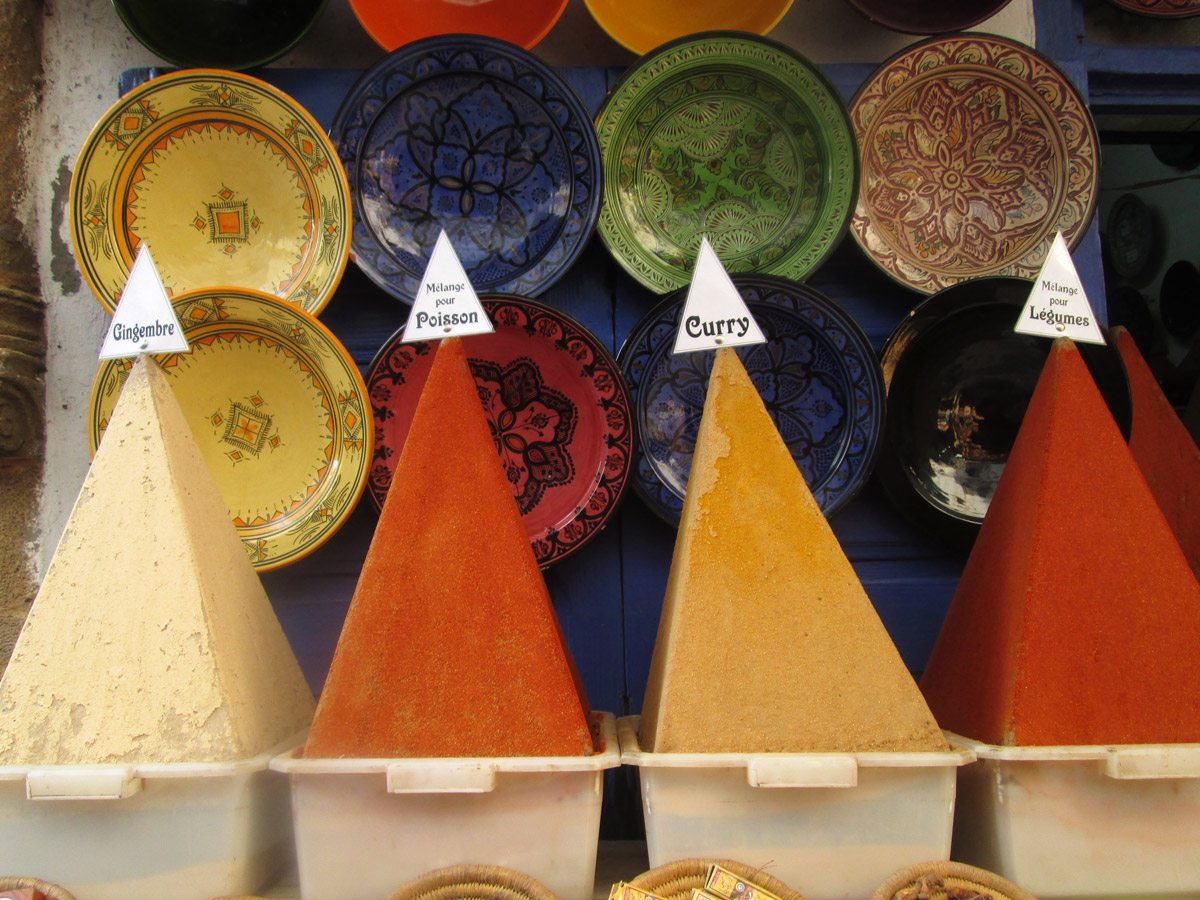
08 | Spices and pottery for sale in Essaouira, Morocco
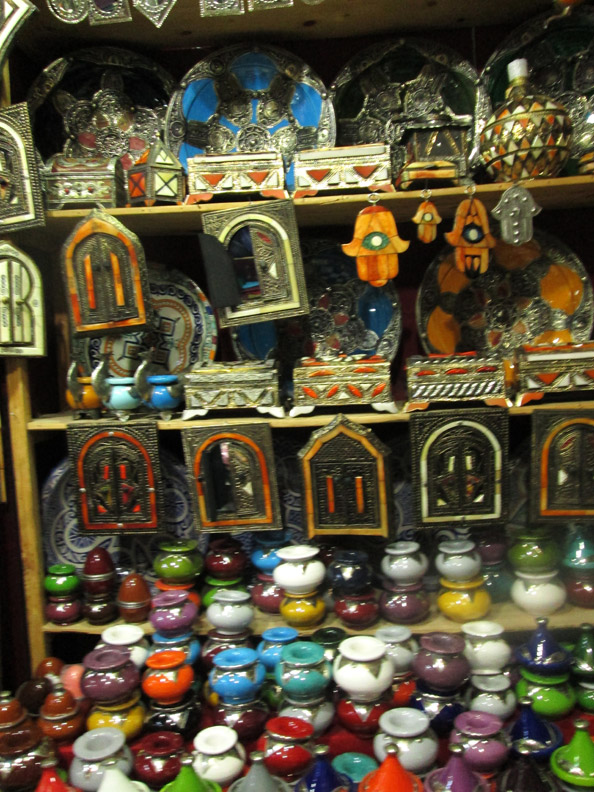
09 | Moroccan pottery and hamsas for sale in Fes, Morocco
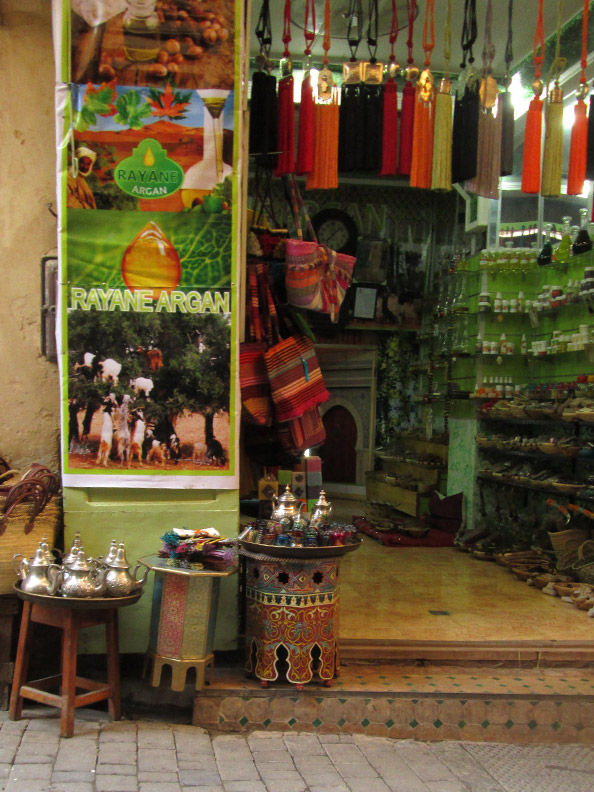
10 | Souks in Fes, Morocco
Almost everything you buy in Morocco will require haggling. The exceptions to this are at restaurants with menus, hotels, and places with set prices displayed. Sellers will often start with a sky-high price which you’ll then have to negotiate down to something more reasonable. Different people will give different advice, but you’ll generally want to counter their original price with a number that’s between 1/3 and 1/2 of what they’re asking. So if they ask 100MAD, you’ll want to offer around 30–35MAD up to 50MAD. From there, they’ll counter with another price, and you’ll go back and forth until you reach an agreeable number. They’ll most likely balk at your offers, acting as though you’re robbing them with such a low offer, but you can continue upping your offer as they lower theirs. Once you reach an agreement on a price, it’s expected that you buy the item you’ve haggled for, so never start haggling for something you don’t actually want. If you can’t get the price low enough, walking away can sometimes get them to go a bit lower to close the deal. Alternatively, sometimes sellers will ask for a “gift” in exchange for a better price. These can range from pens, to sticks of gum, or other small things.
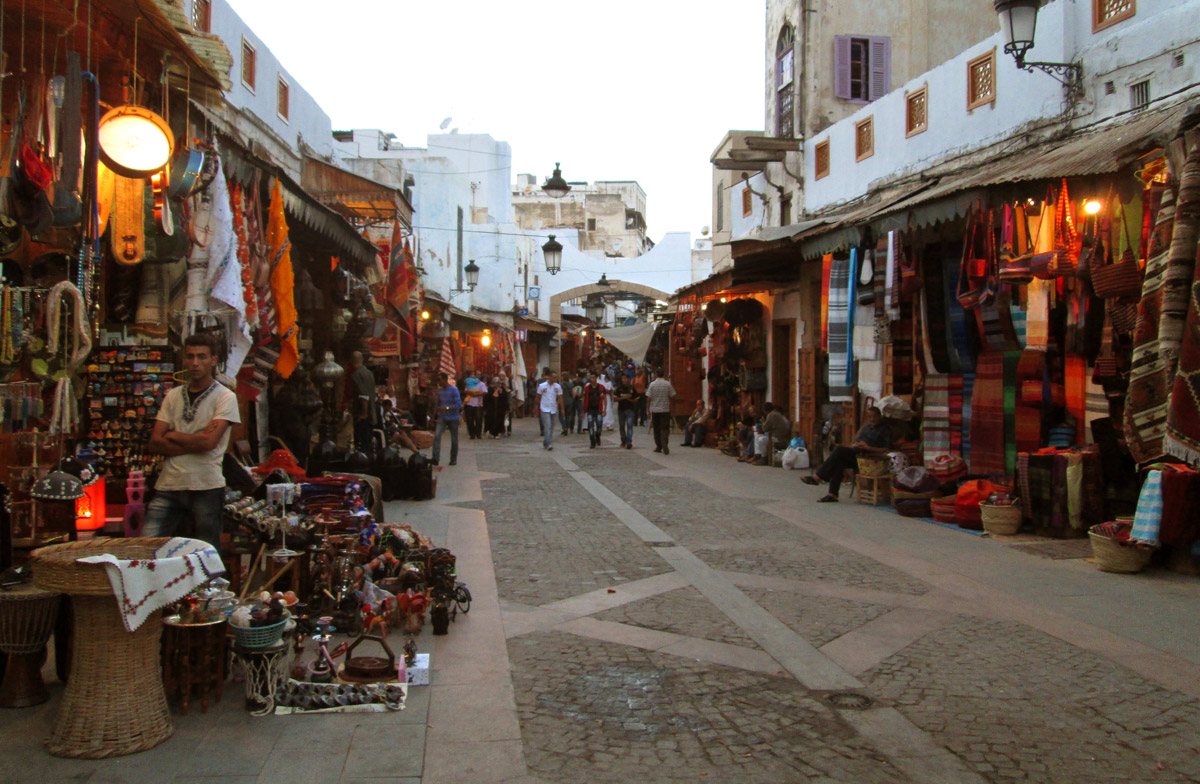
11 | Souks in Rabat, Morocco
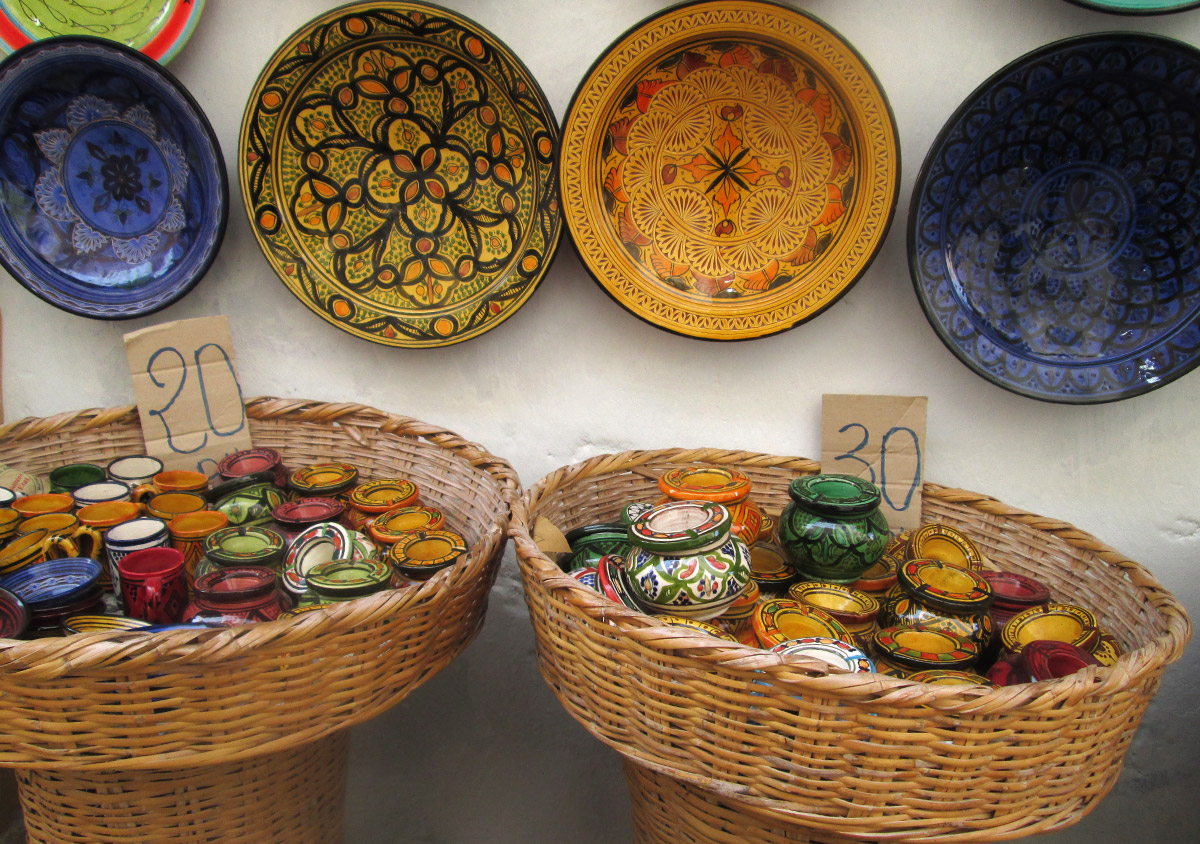
12 | Pottery for sale in Essaouira, Morocco
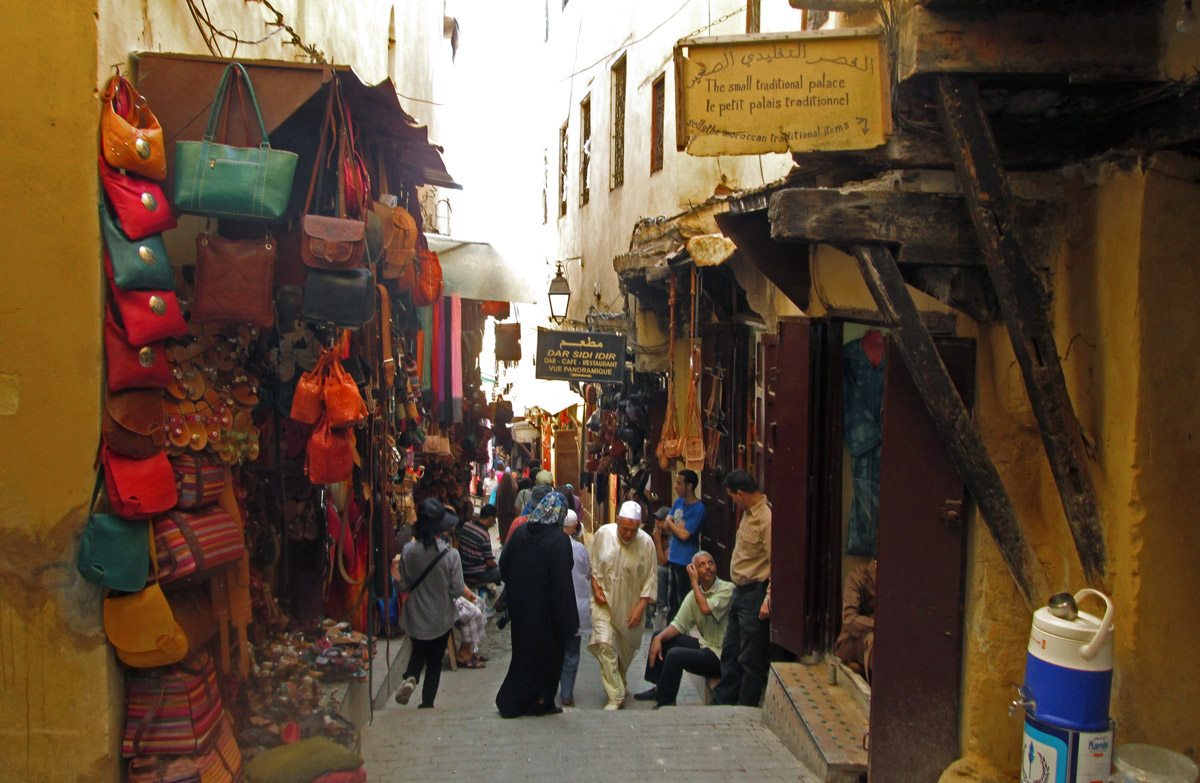
13 | Souks in Fes, Morocco
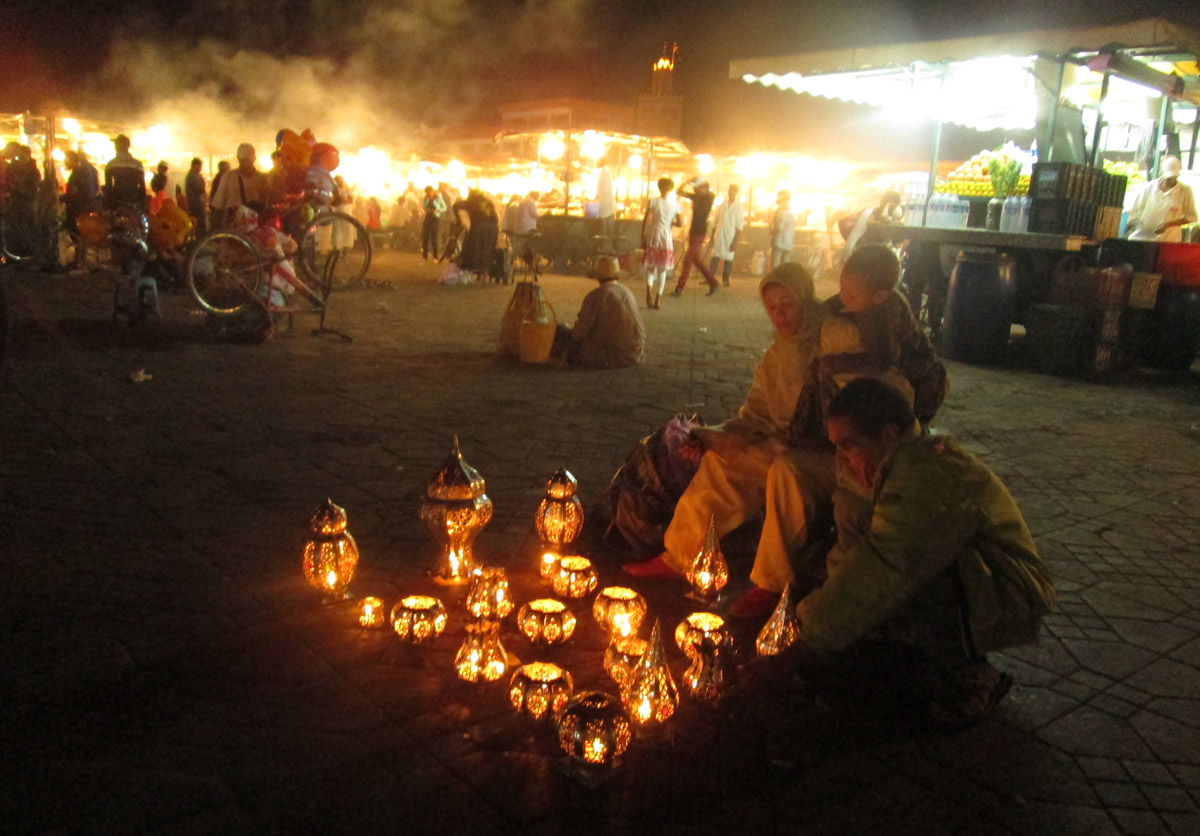
14 | Lanterns for sale at Jemaa El Fna outdoor night market in Marrakesh, Morocco








Leave a Reply
You must be logged in to post a comment.